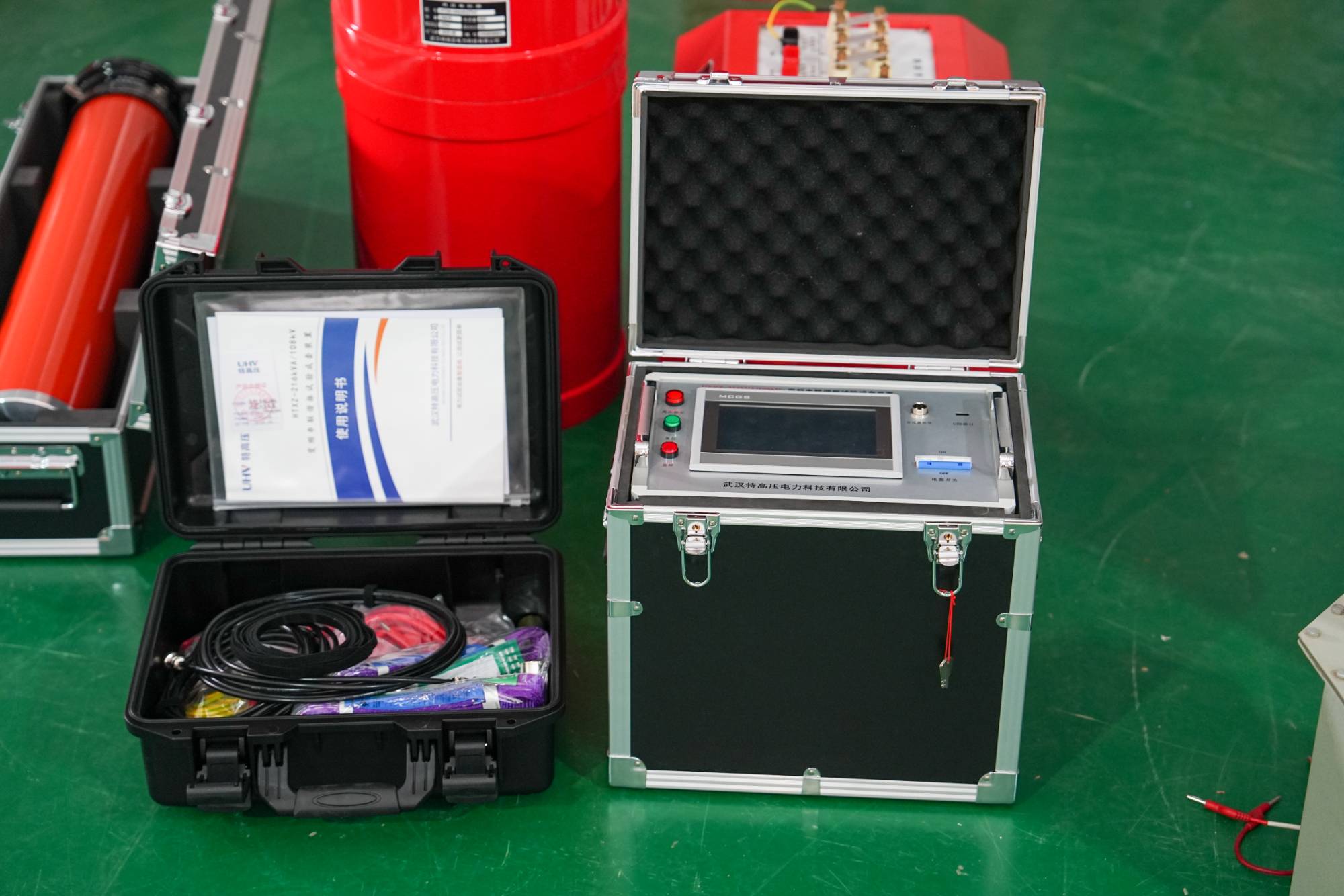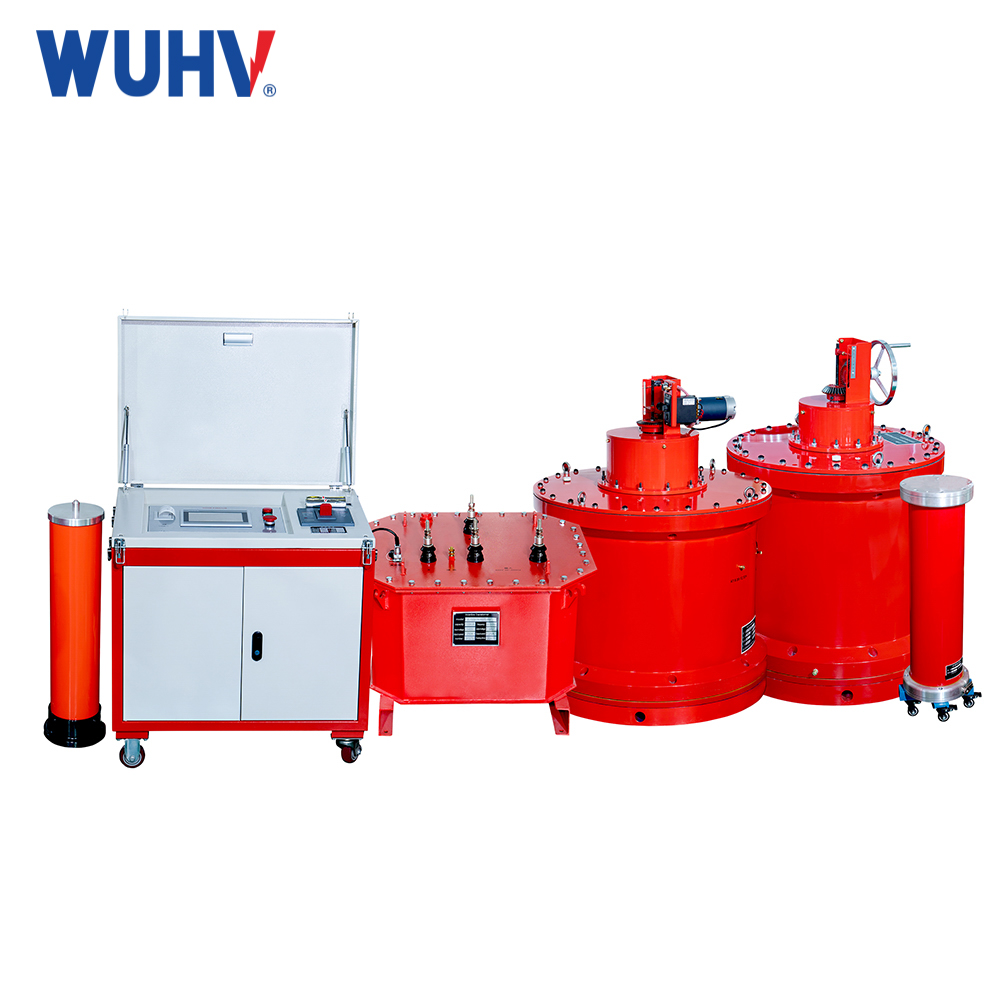The series resonance (also known as power frequency withstand voltage test equipment) produced by Wuhan UHV professional will now share with you how to prevent overvoltage in power frequency withstand voltage test equipment.
The complete set of frequency conversion series resonance test equipment is used to evaluate the insulation strength of electrical equipment. It has a decisive significance in determining whether the electrical equipment can be put into operation and ensuring the insulation level of the equipment. An important means to avoid insulation accidents. Because the frequency conversion series resonance test device can fully reflect the actual operation of electrical equipment under AC voltage, it can truly and effectively detect insulation defects.
The complete set of frequency conversion series resonance test equipment adopts the resonance principle. It generates resonance between the voltage at a certain frequency in the system circuit and the capacitor and reactance in the circuit. After the resonant voltage is generated at both ends of the capacitor (test sample), it is stepped up to make the voltage at both ends of the capacitor reach the test voltage.
Based on the above principles and actual experimental conditions on site, the overvoltage of variable frequency series resonance generally occurs in two situations: one is during the process of finding the resonance point in the instrument and generating the resonance voltage; One is when the boost reaches the test voltage.
In the case of finding the resonance point in series resonance and boosting it to the test voltage, generally, overvoltage protection or other faults will not occur in the test when the withstand voltage of the test sample is not qualified or there is no significant change in the on-site environment. However, due to the fact that the voltage of the power grid is not constant and the input voltage of the power supply fluctuates, the high-voltage output also has a certain degree of fluctuation, which may cause overvoltage protection due to voltage peaks. If there is a fluctuation in the power supply voltage, the overvoltage protection of the instrument can be adjusted and set relatively high. We generally require the overvoltage protection to be set to 1.1-1.2 times the voltage protection, and setting it to 1.2 times is basically not a problem.
The above is the simplest problem, but it is difficult for voltage fluctuations to cause overvoltage when set better than voltage protection. The overvoltage of the general frequency conversion series resonance test set device occurs during the scanning phase of the instrument, which is the process of finding the resonance point. Those who have used the variable frequency series resonance test device know that during the process of finding the resonance point, the voltage and frequency of the device exhibit a parabolic linear relationship. The system defaults to finding the highest voltage, which is the vertex of the parabola, as the resonance point. Due to the theory of resonance principle, low voltage can be resonated up to 80 times (generally not exceeding 30 times due to factors such as quality factor). The voltage required for the frequency conversion series resonance test device to sweep the frequency is generally 20-50V, and the voltage after excitation transformation is generally several hundred volts. Through the above principles, we have found that if the test voltage of the sample we need is lower than the voltage at the resonance point of the system, the system may experience overvoltage protection when automatically searching for the resonance point. At this time, the entire variable frequency series resonance test device cannot withstand voltage in a timely manner, and the test cannot be completed.
The solution to this problem is relatively complicated. The variable frequency series resonance test device cannot generate the test voltage, but the resonance voltage is higher than the test voltage. We know that the system defaults to the vertex of the parabola as the resonance voltage, which means that during the process of the parabola rising to the vertex or falling, there will be a point that is consistent with the test voltage point. We only need to conduct a manual test of variable frequency series resonance, using manual frequency finding to find the frequency point consistent with the operating voltage and then withstand voltage to perfectly solve the overvoltage problem during the process of finding the resonance point.




















